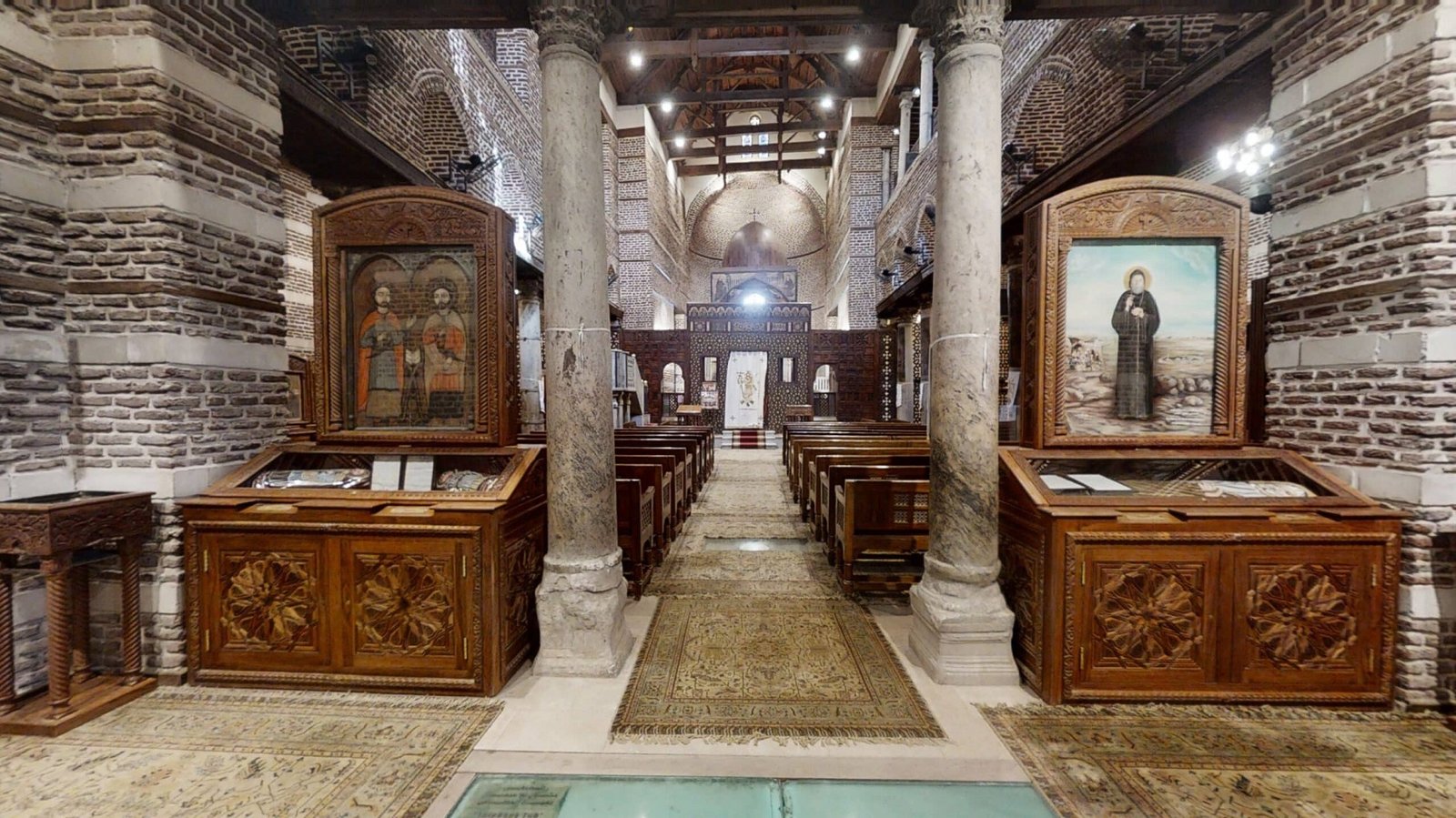The Church of Abu Serga is located in the modern Old Cairo, in the midst of the ancient Roman fortress of Babylon. It is very close to the famous Hanging Church, Coptic Museum, and the Jewish Ben Ezra Synagogue. The Holy Family drank from a well in the church, so the church is characterized among the other Egyptian Coptic churches.
History of Abu Serga church
Abu Serga church was built around the end of the fourth century or the start of the fifth century AD. The church was named after the two saints Sergius and Bacchus, who were martyred near Syria in the 4th century AD after accepting Christianity during the reign of the Roman Emperor Maximian. The Church of Abu Serga is a basilica with an entrance, a nave, and three altars.
Every June, Egyptian churches commemorate the arrival of the Holy Family in Egypt. The Holy Family had stopped and blessed many places in Egypt, including Sinai, Cairo, Upper Egypt, and in their return from Upper Egypt, to Cairo, and Sinai. The Holy Family stayed in the Cave under the church now for three months during their sojourn in Egypt, which is why the church is known as the Cave Church. So that it became one of the most popular religious and tourist destinations for Egyptian Christians and tourists visiting Egypt.
Description of the church
The Abu Serga Church was built above the Cave where the Holy Family stayed during their sojourn in Egypt. This is a unique feature among Egyptian churches. As a result, the location became very sacred.
Church of Abu Serga, like the other ancient Egyptian churches, is a basilica church. It consists of a nave, two isles, three niches, and an entrance on the Church’s western wall. It has a length of 27 meters, a width of 17 meters, and a height of 15 meters. Its original entrance is on the northern wall, but it is no longer in use.
The icons that decorate the walls of Abu Serga Church are some of the greatest Coptic artifacts. These icons are adorned with images of Christ, the Virgin Mary, and Saints. The church has three magnificent wooden niches. Some of the icons in the middle niche date back to the 13th century AD. The other two niches, on the other hand, date from 1738.
Cave and a Well:
The Cave has always held great significance since the church’s construction because it was where the Holy Family lived for three months. The Abu Serga Church also has a unique feature among Egyptian churches: the well in the cave where Christ drank. The well is now covered in glass so that visitors to the church can see it.
The cave is located 6 meters beneath the church. The Cave is accessed via a small stairway from the nave of the church. It measures six meters long and 4.5 meters wide and is divided into three sections by stone pillars. There are three circular holes on the cave’s eastern wall and one on the cave’s southern wall. A marble cubic stone with a cross carved on it is placed in each hole. There is a granite block carved in the shape of a small bathtub, and it is said that the infant Christ slept on it.
The holy family made 17 stops in Cairo, one of the most significant being the Cave beneath the Abu Serga Church. Because the Holy Family stayed here twice, once on their way here and once on their way back. They chose this location because there were a lot of Jews living there, and they figured no one would look for them among the Jews.
How to get to Abu Serga Church from Cairo?
To reach the Abu Serga Church in Old Cairo from central Cairo, follow these steps:
By Metro:
- Take the Cairo Metro Line 1 (the red line) and head towards the Mar Girgis Station.
- The Abu Serga Church is just a short walk from the station exit, located within the Coptic Cairo area.
By Taxi or Ride-Hailing Apps:
- Use a taxi or ride-hailing apps like Uber or Careem, and set your destination as Abu Serga Church or Coptic Cairo.
- The church is located in the Misr Al-Qadima (Old Cairo) district, and most drivers are familiar with the area.
By Bus:
- Take any bus heading to Old Cairo or Mar Girgis Square.
- From the bus stop, it’s a short walk to the church.
Guided Tours:
Egypt Best Vacations offers many daily guided tours that include Coptic Cairo with the Church of Abu Serga and other churches included. These tours include transportation, entrance fees and expert tour guides.

